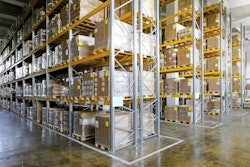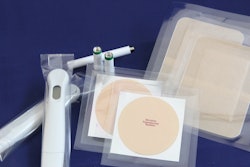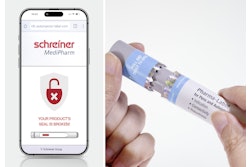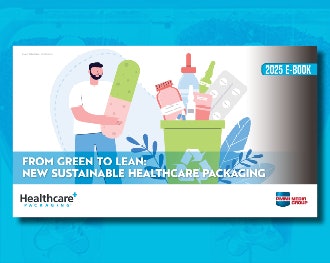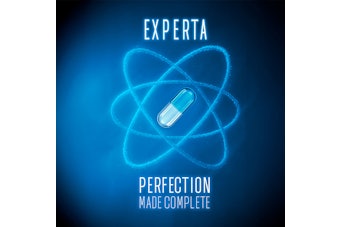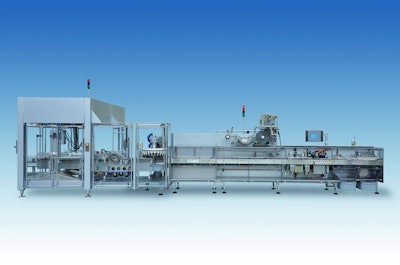
Bosch Packaging Technology introduces the new Sigpack HCUL horizontal flow wrapper. Packaging up to 300 single blow-fill-seal (BFS) vials/min, the machine ensures hermetic packages even at high speed by featuring long-dwell, cross-sealing technology. Primary packaging units, delivered as BFS cards, are gently fed into the Sigpack HCUL with the aid of a Sigpack LDF Delta robot or other intelligent loading equipment. Before being packaged in the flow wrapper, the vials are separated by the feeding system’s separation unit.
Without compromising packaging integrity, the Sigpack HCUL long-dwell sealing system features a cross-sealing unit that allows the sealing jaws to close gently and in a controlled manner even at high speeds. This long-dwell sealing ensures longer sealing times to produce hermetic packages, which facilitates optimum product protection.
The balcony design of the cross-sealing unit with individually mounted heating elements allows for easy access and fast changeover. Depending on application requirements, the station has the flexibility to be equipped with either ultrasonic or heat-sealing technology. Also available are hybrid machines that use ultrasonic sealing technology on the longitudinal sealing unit and heat sealing on the cross seam. Because thermo-sensitive products can be damaged when exposed to heat, usually occurring when transported over the longitudinal sealing unit, this hybrid configuration provides a high-speed, product-friendly seal for these products.
To sense the production of high-value products, the Sigpack HCUL is equipped with a comprehensive control system. Among other parameters, the system monitors the alignment of the products as well as the information printed on the packaging, such as the barcode. By ensuring packages that do not meet the specifications are automatically rejected, only hermetically sealed packages leave the machine.
The flexible Sigpack HCUL is expandable to accommodate modified atmosphere packaging (MAP). Thanks to its modular construction, it can be modified for functions such as the Real Time (RT) MAP system. Compared to conventional MAP systems, where the gas is inserted by a lance, the gas supply for the RT MAP and the sensor for measuring residual oxygen content are integrated in the longitudinal sealing unit. This provides real-time measurement of residual oxygen content in the package, rejecting those that have excessive residual oxygen. The amount of gas supplied or extracted is precisely controlled so that only the necessary amount is released. The RT MAP system benefits manufacturers with improved measuring accuracy, as well as savings on production costs, according to the vendor.



